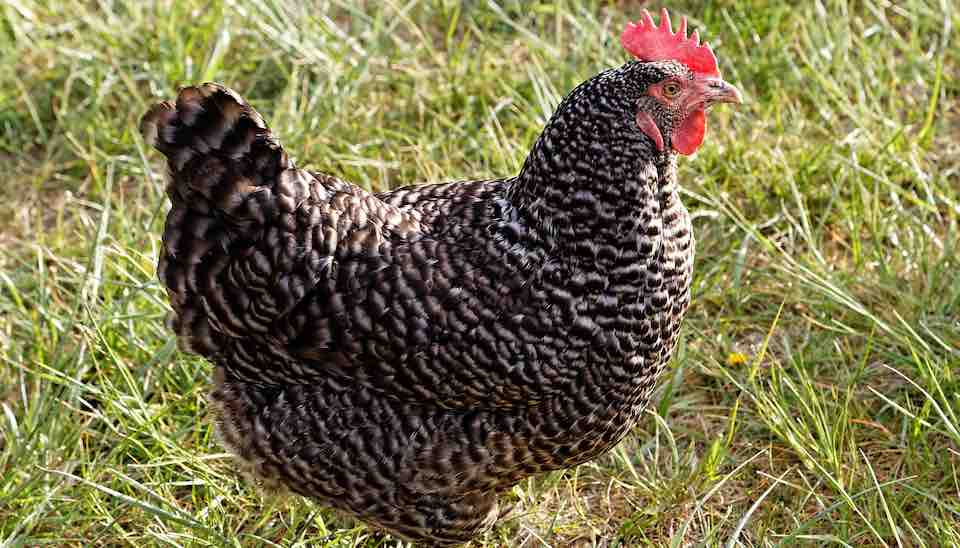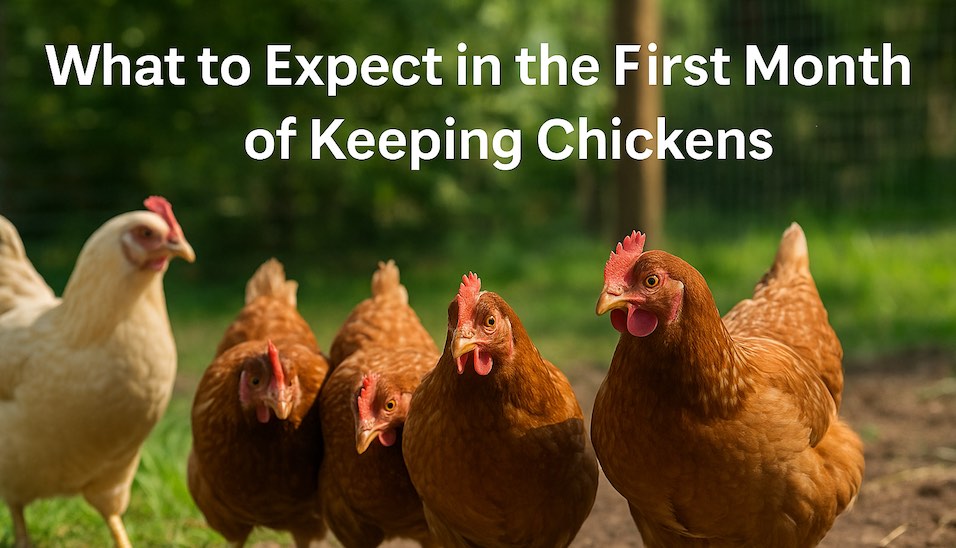The Complete Guide to Heritage Chicken Breeds
Heritage breed chickens – What are they and why should you care?
You may have heard people talking about heritage breed chickens. But what is a heritage breed? Surely a chicken is a chicken.
Find out what makes heritage breeds different from other chickens and why it is important that backyard chicken keepers continue to raise heritage breed hens.
Contents:
Click the link to jump to the section you are looking for:
1. What are heritage breed chickens?
2. Heritage breeds versus commercial breeds
3. Why you should care about heritage breeds
4. What are the benefits of keeping heritage breed chickens?
5. Are heritage breed chickens right for you?
6. How to choose the best heritage breed for your chicken coop
7. Keeping heritage breed poultry
1. What are heritage breed chickens?
Traditional varieties of fruit and vegetables that aren’t available at the supermarket, like beefsteak tomatoes and kipfler potatoes, are called heirlooms. These are old-fashioned plant varieties that were popular before industrial-scale farming. You would have found them in your grandparent’s gardens.
Heritage breeds are the livestock equivalent of heirloom vegetables. Heritage breed chickens are the type of chicken that might have been raised by your grandparents. All modern chicken breeds have been created from heritage breeds.
Some heritage breed chickens are still common, like Australorps and Rhode Island Reds. Others, like the Dutch Bantam, are endangered in Australia. Some heritage breeds, such as the Old English Pheasant Fowl, are so rare that they are endangered all over the world.
Although there is no official definition of a heritage breed in Australia, in the USA a heritage breed was established before the mid-20 th century.
2. Heritage breed chickens versus commercial breed chickens
When people think of backyard chickens, they normally picture a reddish-brown hen. These are usually ISA Browns or Hy-line Browns. They are the most common chicken in Australia because they are used in most commercial egg farms – they are a commercial breed chicken.
Most commercial breed chickens are crosses of different heritage breeds. They have been genetically manipulated to perform well in industrial farming conditions and have only been around since about the 1950s.
There are significant differences between heritage breed chickens and commercial breed chickens.
| Heritage Breeds | Commercial Breeds |
| Mature slowly | Mature quickly |
| Live for 6-12 years | Live 3-4 years |
| Lay 3-6 eggs/week, depending on breed | Lay an egg a day |
| Produce eggs reliably for several years | Reduce production significantly after 2 years |
| Are hardy and good foragers | Require a perfectly balanced diet to be productive |
| Tend to go broody and are often good mothers | Rarely go broody and are not good mothers |
| A rainbow of egg colours available | White or light brown eggs |
| Many different breeds available for different purposes | Only a few breeds available for either meat or eggs |
| Developed for backyard conditions | Developed for commercial conditions |
| Suitable for breeding at home | Cannot be bred at home |
The difficulty of generalising
Commercial chicken breeds all have very similar characteristics.
It is more difficult to generalise about heritage chicken breeds because there are hundreds of breeds with unique characteristics. Some lay almost as well as commercial breeds, while others might lay very poorly. There are also heritage breeds that have been developed to thrive in particular conditions, such as hot climates, free-ranging etc.
A note on breeding chickens
When comparing heritage and commercial chickens, it is also important to talk about breeding.
If I breed heritage chickens, for example a Welsummer rooster with a Welsummer hen, I will get Welsummer chicks. Like siblings, the chicks will all be slightly different, but they will all be Welsummers and will all have the main traits of the breed.
Commercial breeds, on the other hand, are hybrids, and their genetic make-up is closely guarded by the companies that developed them. Even if I breed a Hy-line Brown hen with a Hy-line Brown rooster, I will not have Hy-line chicks. And because of the crossing, the chicks produced are likely to have health and productivity issues.
So while you can technically breed commercial chickens at home, not only is it potentially infringing on commercial rights, the chicks will not be the same breed as their parents.
3. Why you should care about heritage breeds
Heritage breed chickens are important. Here are three reasons why all chicken keepers should care about heritage breeds:
- If people don’t keep heritage chickens, they will disappear
Heritage breeds are living history. Many people put decades of work into developing and perfecting the different breeds. If we don’t continue to keep them, this work will be lost.
Because biosecurity restrictions in Australia are so tight, if a heritage breed is lost it will probably be impossible to re-introduce it.
Some heritage breed chickens have already disappeared, both in Australia and globally. The Rare Breeds Trust of Australia keeps a list of Australian heritage breeds that are at risk. Some of these breeds are only present in Australia.
- There is a heritage breed to suit any chicken coop
Commercial chicken breeds are all very similar and require certain conditions to thrive.
Heritage breed chickens, on the other hand, come in all sorts of colours and sizes, with different comb types. Some have long tail feathers, funny top-knots or feathery feet. They lay eggs large and small, in a rainbow of colours. There are breeds for hot conditions, and cold. And there are heritage breeds that have been specifically developed for all sorts of purposes: egg laying, meat production, cockfighting or even just looks!
Being able to choose a chicken breed suited to your purposes and circumstances helps you keep healthy, happy and productive hens!
- Preserving the genetic diversity of heritage breeds is important for the future
The many heritage chicken breeds are far more diverse than the few commercial breeds available. All this genetic diversity is important for the future because if there is a change or disaster, some breeds will have the right genetics to adapt and survive.
If all our chickens have only a few genetic traits, like the commercial breeds, they are a lot less likely to survive and thrive when changes occur. And if our chickens don’t survive, it may be more difficult for people too.
A change that threatens chickens is unlikely to occur in our lifetimes, although COVID-19 and FMD show that anything is possible. But preserving as many diverse animal species as possible, both wild animals and domestic breeds, is very important for future generations.
The only way that we can preserve heritage breeds, and protect future genetic diversity, is by keeping heritage breed chickens.
4. The benefits of keeping heritage breed chickens
There are many benefits to keeping heritage breed chickens:
- Because of the wide range of different breeds, there is a heritage chicken breed to suit everyone.
- Although they don’t often lay as intensively as commercial breeds, heritage breed chickens often lay for a much longer period
- They live longer
- They tend to do better free ranging or on a more varied diet
- They are better mothers
- They cope better with heat, cold and other environmental pressures
- Having a heritage breed is essential if you want to raise your own chicks
- There is more variety
But the diversity also means that it is difficult to generalise about heritage breeds because the characteristics that make heritage breeds different from commercial breeds are not present in every heritage chicken breed.
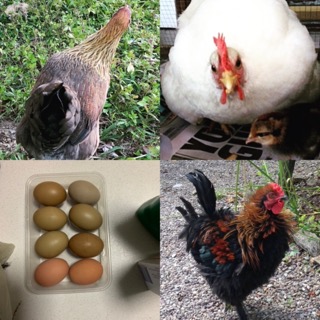
5. Are heritage breed chickens right for me?
There is a heritage breed chicken available to suit any backyard. Some breeds are quiet and make great pets. Other breeds are hardy, good foragers or awesome mothers.
It is important that backyard chicken keepers continue to keep and breed heritage chickens. The more people that do this, the better protected those breeds will be.
But there is also nothing wrong with keeping commercial breed chickens if they suit you. If you want an egg a day and can provide the ideal conditions, you can’t beat an ISA Brown!
Keeping heritage breed chickens and commercial chicken breeds is not an either/or situation. Many backyard chicken keepers keep both!
But if you want to breed your chickens or require hardier birds, then a heritage breed is a better choice.
6. How to choose the best heritage breed for your chicken coop
There is no “best” heritage chicken breed. It all depends on what you are looking for in your flock! The conditions in your chicken coop also make a difference to which heritage breed is best for you.
There are hundreds of different heritage chicken breeds in Australia. Some will be a better choice for your climate, for if you have kids or for the size of your chicken coop or yard.
In this section, we outline:
The best heritage laying hens
The best heritage chicken breeds for meat
The best dual purpose chicken breeds
Which heritage chicken breeds make the best mothers
Some other heritage poultry that we love!
But remember, because heritage breeds are more genetically diverse than commercial chickens, their characteristics are more variable. For example, just because a heritage breed is known for having aggressive roosters, this doesn't mean every rooster will be!
The way heritage chickens have been bred will also make a difference to how they perform. If you are particularly interested in egg (or meat) production, talk to your breeder to ensure they have been selecting their chickens for good laying rather than another characteristic like broodiness, meat or appearance.
The best heritage breed chickens for eggs
Some of the best heritage breed layers can produce almost as well as a commercial breed hen in the first few years. Plus, they have the added benefit of continuing to lay fairly reliably, albeit in decreasing amounts, for many years.
Some of the best heritage laying hens include:
- Ancona
As well as being one of the prettiest poultry varieties, Anconas lay well for a relatively small chicken and are not inclined to broodiness. Well-suited to free-ranging, Anconas fly easily and tend to roam, so may not suit urban areas or small backyards.
- Australorp
Although Australorps don’t lay as well as they did in the past, due to breeding practices that favour appearance over egg production, they still produce an average of 5 eggs per week and have a long laying life. Suited to a range of climates, they are quiet but friendly, making them great chickens for a family with kids. Australorps are adaptable to both free-ranging and smaller yards, but do have a tendency to obesity if confined.
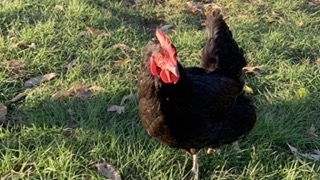
- Hamburg
Although not as productive as some other breeds, Hamburgs are quite good layers of small eggs. Their small size makes them economical eaters, and they are very good foragers. Hamburgs dislike confinement and have a tendency to fly, so may not be suited to urban backyards.
- Langshan
Langshan chickens are particularly friendly and docile, making them great pets and perfect for families. They are reliable layers and cope well with both confinement and warm weather.
- Leghorn
Leghorns tend to be excellent layers and, due to their small size, are also economical eaters. Best suited to free-ranging, Leghorns have a reputation for being flighty. They have a tendency to roam and their light build means they fly easily. Although not great for small backyards or families with children, Leghorns are an excellent choice if you have enough space and want relatively self-sufficient chickens.
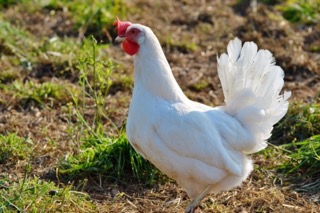
- Rhode Island Red
These large, robust chickens do best free-ranging. Not only are they great survivors, they are long-lived and usually pretty personable too! That said, the roosters have a reputation (which I, at least, have seen IRL) for being aggressive. Like Australorps, Rhode Island Reds, as a breed, do not lay as well as they once did, but can still produce 4-6 eggs per week depending on the strain, so check with your breeder!
- Sussex
Sussex are lovely birds: friendly, curious and quiet, they are well-suited to families. As well as laying reliably, Sussex hens are capable foragers. Although they don’t need as much space as more robust chickens, like Australorps, Sussex chickens can become obese if confined or fed lots of scraps.
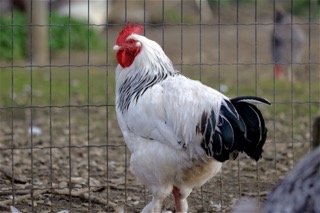
- Welsummer
These chickens have a lot going for them (although I might be slightly bias because I keep Welsummers). Welsummer hens have beautifully patterned golden-brown plumage, while the roosters are equally stunning in solid red and black. Welsummers are calm and friendly: the roosters are rarely aggressive and I've never even been pecked by a broody hen when going after the eggs! Although they can fly, Welsummers rarely do, so are easier to confine that some other breeds. They also lay gorgeous brown eggs, and are easy to sex as chicks due to distinct markings. In my experience, the only flaw is that they aren't great mothers.
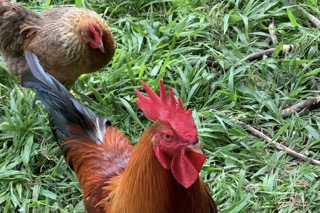
Chicken breeds for rainbow eggs
Some of the rainbow egg layers aren’t that productive, compared to the breeds above, but the lovely eggs more than make up for it in our opinion!
If you want rainbow eggs, consider the following breeds:
- Welsummers lay beautiful deep brown eggs, sometimes with speckles, although different strains have lighter or darker eggs
- Araucanas are famous for producing lovely blue eggs. They are only moderately productive but the beautiful eggs more than make up for it!
- Marans lay lovely brown or olive eggs, depending on the variety
- Cream Legbars can lay blue eggs
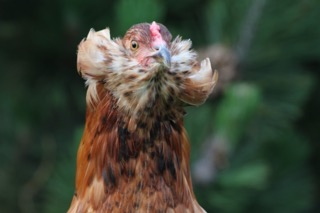
It is important to note that Olive Eggers and Easter Eggers lay beautifully coloured eggs, ranging from blue and green to olive, grey or brown. However, these chickens are actually cross-breeds, for example the offspring of a Welsummer and an Araucana will often produce olive eggs. They are great to have in a flock, but aren’t a true heritage breed and won’t necessarily produce “Olive Egger” chicks.
The best heritage breed chickens for meat
There are a range of heritage meat chicken breeds available in Australia, but none of them grow as quickly as commercial broiler lines, which can be ready for slaughter in as little as 40 days. That said, any of the “game” breeds, such as the Australian Game or Indian Game, as well as the Transylvanian Naked Neck, are suited to meat production.
If you really want heritage meat chickens, most people choose either a "game" breed or a dual-purpose breed that will provide meat and eggs.
The best dual purpose heritage breed chickens
Dual purpose chicken breeds are raised for both meat and eggs. They are the best choice when you want to breed your own chickens and plan to use the excess roosters for meat.
Dual purpose breeds tend not to lay quite as well as the egg laying breeds, and may eat slightly more feed due to their bigger frame. Their size can be a benefit in a free-range situations where predators may be present.
Some of the best dual purpose chicken breeds in Australia are:
- Australorp
Initially bred as a dual purpose breed, Australorps lay particularly well for a dual purpose bird and gain weight well.
- New Hampshire
Related to the Rhode Island Red, New Hampshire chickens look like a heavier version of a commercial layer. In addition to laying well, they make good table birds. Although very popular overseas, these American imports are somewhat difficult to source in Australia.
- Plymouth Rock
Plymouth Rock chickens are worth keeping for their lovely zebra-striped plumage alone. But fortunately, they are also friendly and easy to tame, making them great for beginners and families. Plymouth Rocks are hardy and do well with some room to forage. When purchasing hens or chicks, it is best to enquire with the breeder, as some strains are better layers while others are primarily meat birds that don’t lay as well.
- Rhode Island Reds
Rhode Island Reds are one of the most popular dual purpose birds. As well as laying well, they have a large frame.
- Sussex
Originally bred as a top-quality broiler, the Sussex still makes an excellent table bird.
- Welsummer
Although the hens can be smaller than some of the other dual purpose breeds, the roosters are large enough to make the Welsummer a suitable dual purpose bird.
- Wyandottes
Wyandottes are another truly gorgeous bird with laced feathers and a range of different colour varieties. They are generally calm and friendly, but like to be at the top of the pecking order. Wyandottes don’t lay as well as varieties like Rhode Island Reds, but can cope with a smaller yards and make good table birds. They may struggle in hot weather.
The best heritage breed chickens for breeding
Silkie hens are some of the best mothers out there! They are determinedly broody, so almost never desert their clutch midway through sitting, and they tend to be wonderful mothers once the clutch hatches. Many breeders use Silkies to hatch and raise the babies of other chicken breeds that are less “motherly”. Silkies will happily raise almost any type of poultry, from ducks and geese through to turkeys!
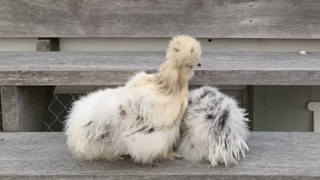
Other heritage chicken breeds renowned to have good mothering skills include:
- Cochins
- Frizzle
- Orpingtons
- Rhode Island Reds
- Sussex
- Wyandottes
Although they don’t necessarily have great reputations as a breed, we have also found Australorps and Leghorns to be excellent mothers in our own flock. Especially Leghorns.
Other heritage poultry that we love
Here are some of our other favourite heritage breed chickens and other poultry.
Some are rare in Australia, while others are more common. But they all have unique qualities that you can’t find in commercial breeds.
- Sebright Bantams: Their beautiful black-edged feathers make Sebrights one of the prettiest chicken breeds around and these little bantams can make great pets too
- Campines: These chickens are good layers and have lovely feather markings
- Cochins: These gentle chickens make excellent pets, although their cutely feathered feet mean they are best suited to neat, dry yards
- Frizzles: With their magnificent fluffy, ruffled feathers, Frizzles are popular pets
- Legbars: Legbars get points for convenience, as pure-bred legbars can be sexed at hatching, based on feather colour
- Orpingtons: These are friendly, docile chickens that make excellent pets. Plus they are cute, fluffy and decent layers!
- Elizabeth Duck: This duck is a part of Australia’s heritage, developed in NSW
- Khaki Campbell Ducks: Particularly good layers, these ducks are a great breed to choose if you are looking for duck eggs for cakes
- Australian Settler Geese: Also called Pilgrim geese, these grey and white geese are a beautiful addition to large yards
- Sebastopol Geese: Their gorgeous, ruffled feathers make these one of the cutest geese breeds available
What are your favourite heritage breeds?
Keeping heritage breed chickens
Keeping heritage breed chickens is just the same as keeping commercial laying hens. All chickens need the same type of diet and environment to thrive.
Of course, some heritage breeds do better in certain conditions – for example chickens with feathered feet are best kept in cooler climates and away from wet, muddy yards. And some require special care – for example Silkies should never be left out in the rain because their feathers aren’t waterproof and they can become ill.
But most heritage chicken breeds with thrive in any well-managed chicken coop!
Would you like to learn more about heritage breeds in Australia?
There are a lot of chicken keepers who are passionate about preserving Australia’s heritage breed chickens.
Joining a local Poultry Club is a great way to start off with heritage chickens. There are even breed-specific clubs, often with a Facebook Group, that can help you source eggs, give you advice about the breed or connect you with other breeders. Here is a list of many of the Poultry Clubs in Australia.
The Australian Rare Breeds Trust keeps a register of rare poultry breeds as well as other livestock. Australian-bred breeds, such as the Settler Goose and Elizabeth Duck, are particularly important to preserve because they are only found in Australia!
Why get in involved in breeding heritage chickens?
Just keeping heritage breed chickens is a great step towards ensuring that these breeds persevere into the future.
But if you want to go one step further and start breeding your own heritage chickens, that is even better!
If you are interested in growing heirloom vegetables and preserving their genetic material and seeds, then why should your chickens be any different? It will be far more challenging than just buying chickens from a large-scale hatchery, but helping to preserve a heritage chicken breed is immensely rewarding.
Heritage breeds can be more expensive than commercial hybrid layers, because they are less common. So if you are planning to get into raising heritage breeds, an incubator can be a great place to start as the eggs will be cheaper than a chicken.
If you are interested in breeding your own heritage chickens, get in touch with a breed-specific poultry club!
Happy chicken keeping!
Rachael at Dine a Chook Australia


